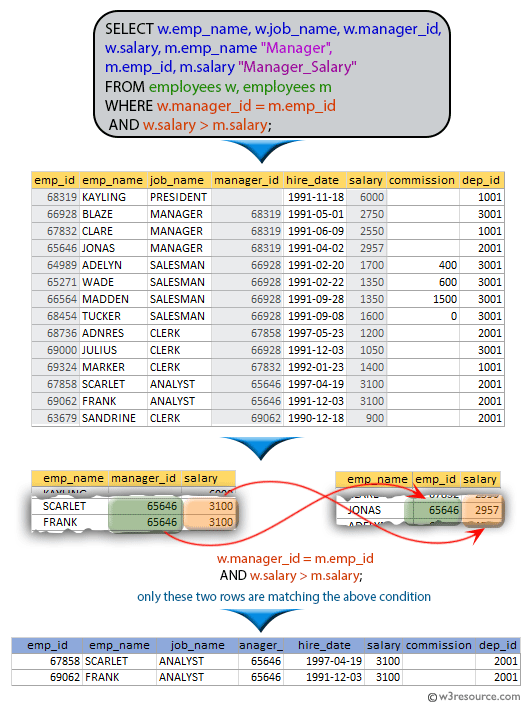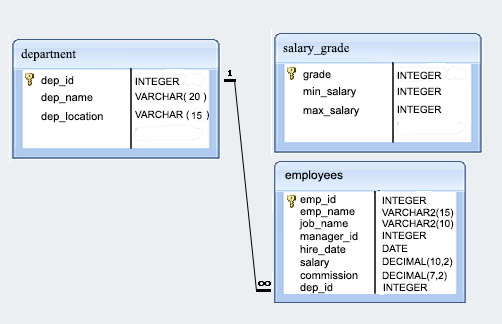SQL Exercise: Employees whose salary is greater than their managers
[An editor is available at the bottom of the page to write and execute the scripts.]
54. From the following table, write a SQL query to identify employees whose salaries are higher than their managers' salaries. Return employee name, job name, manager ID, salary, manager name, manager's salary.
Sample table: employees
Pictorial Presentation:

Sample Solution:
SELECT w.emp_name,
w.job_name,
w.manager_id,
w.salary,
m.emp_name "Manager",
m.emp_id,
m.salary "Manager_Salary"
FROM employees w,
employees m
WHERE w.manager_id = m.emp_id
AND w.salary > m.salary;
Sample Output:
emp_name | job_name | manager_id | salary | Manager | emp_id | Manager_Salary ----------+----------+------------+---------+---------+--------+---------------- SCARLET | ANALYST | 65646 | 3100.00 | JONAS | 65646 | 2957.00 FRANK | ANALYST | 65646 | 3100.00 | JONAS | 65646 | 2957.00 (2 rows)
Explanation:
The given query in SQL that selects the employee name, job name, manager ID, salary, manager name aliased as "Manager", manager ID, and manager salary aliased as "Manager_Salary" for all employees from the employees table.
The query is using a self-join to combine data from the employees table with itself based on the manager_id column.
The WHERE clause filters those employees whose salary is greater than their manager's salary.
Go to:
PREV : Employees earning 60000 or not working as analysts.
NEXT : Employees whose salary is in a range and location PERTH.
Practice Online
Sample Database: employee

Have another way to solve this solution? Contribute your code (and comments) through Disqus.
What is the difficulty level of this exercise?
Test your Programming skills with w3resource's quiz.
